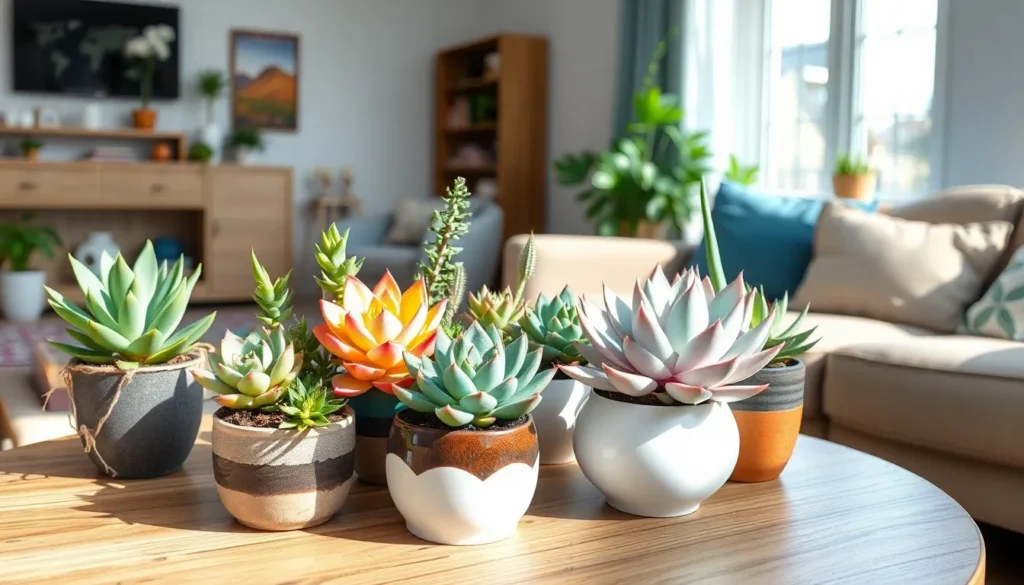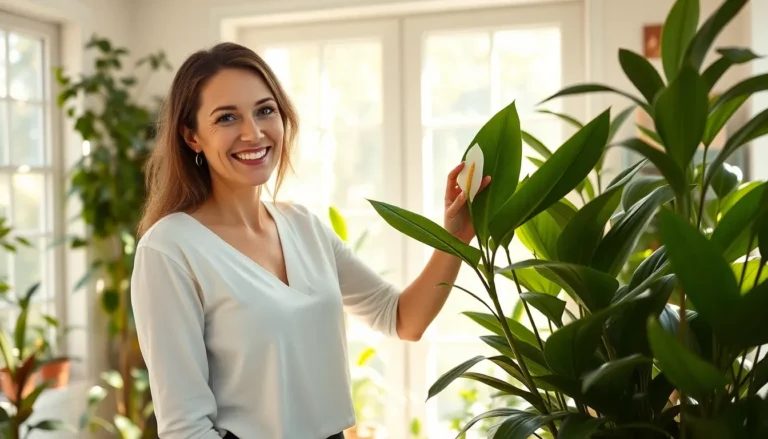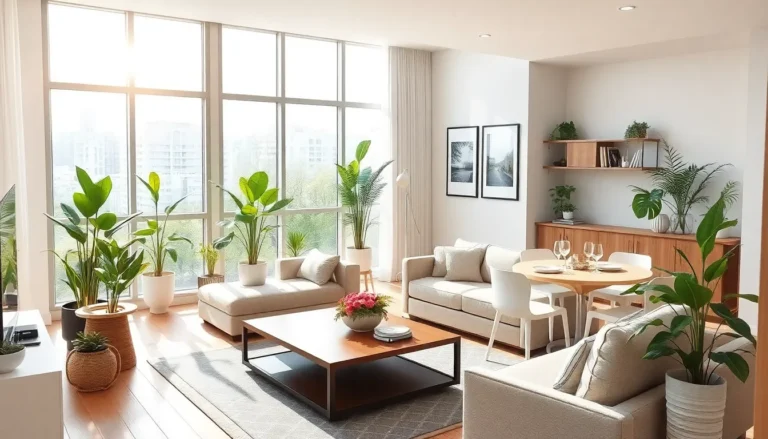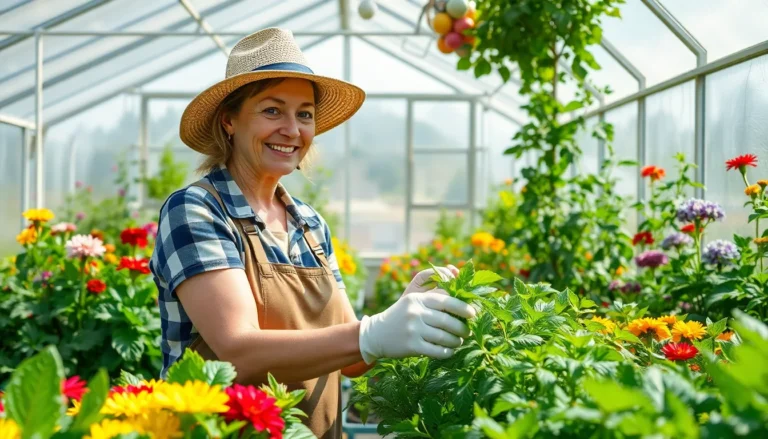Table of Contents
ToggleSucculents are the ultimate house guests—low-maintenance, charming, and they won’t eat your snacks. These delightful plants have taken the indoor gardening world by storm, transforming dull spaces into vibrant oases with their quirky shapes and colors. Whether you’re a seasoned plant parent or just starting out, succulents offer a perfect blend of beauty and resilience, making them ideal companions for any home.
Imagine a world where you can have greenery without the constant worry of overwatering or pest infestations. Succulents thrive on neglect, so you can finally kick back and enjoy your plant collection without feeling like a full-time gardener. From the iconic Echeveria to the playful Jade plant, there’s a succulent for every personality. Dive into the world of common succulent house plants and discover how these little wonders can elevate your space and bring a smile to your face.
Overview Of Common Succulent House Plants
Succulent house plants are perfect for enhancing indoor environments. These plants come in various shapes, colors, and sizes, appealing to a wide range of preferences. Echeveria represents one popular variety, known for its rosette shape and vibrant hues. With proper care, it adapts well to indoor conditions, bringing a touch of elegance.
Jade plants are another common choice for succulent enthusiasts. This plant features thick, glossy leaves, symbolizing prosperity and good luck in many cultures. Growing jade plants requires minimal effort, making them suitable for both beginners and seasoned gardeners.
Haworthia, characterized by its distinctive striped leaves, adds an interesting texture to indoor spaces. It thrives in low light, which makes it adaptable to various settings. Availability of multiple varieties allows plant owners to create unique arrangements.
Aloe vera serves not only as a decorative element but also offers medicinal benefits. Known for its healing properties, this succulent should be part of every household. Its friendly care routine, requiring little water, keeps it healthy.
Sedum, often valued for its resilience, provides a variety of textures and forms. This diverse genus includes ground covers and upright varieties that can complement different decor styles. Collectively, these succulents serve as excellent indoor companions.
Consider these common succulent choices when thinking about indoor greenery. Each succulent contributes uniquely to home environments. Their low-maintenance nature, appealing aesthetics, and hardiness make them a valuable addition to any space.
Popular Types Of Succulents
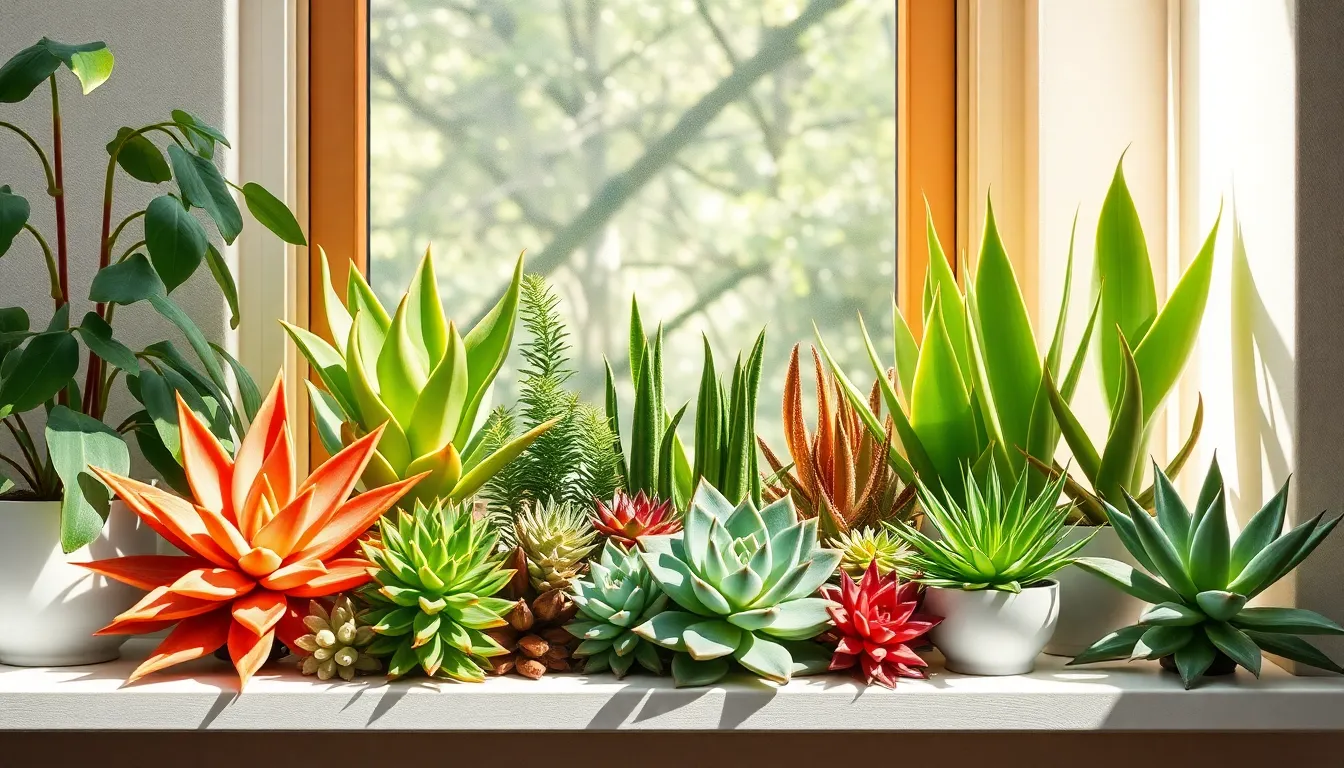
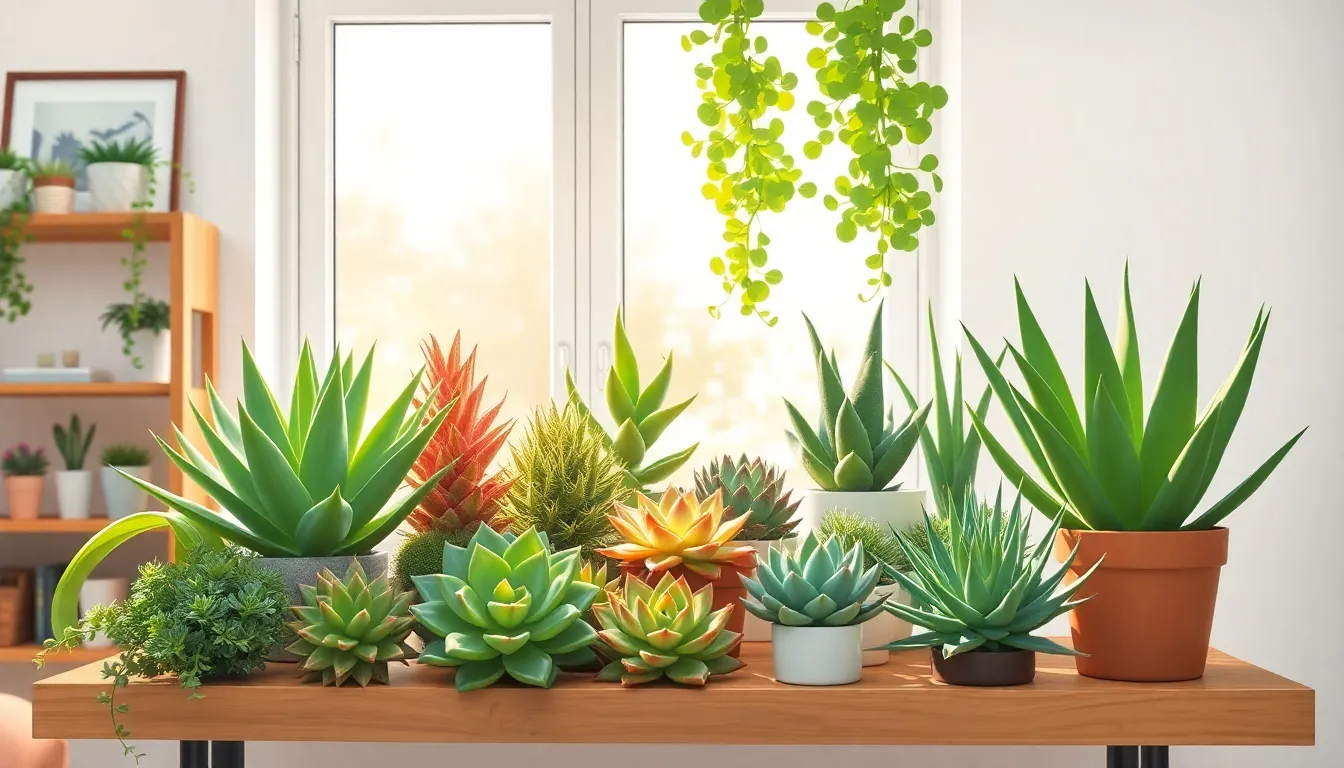
Numerous succulent varieties thrive indoors, each offering unique attributes and charm.
Agave
Agave features thick, spiky leaves that form a rosette. This succulent requires minimal watering, making it an excellent choice for busy individuals. Some varieties, like Agave americana, can grow quite large, showcasing striking architectural forms. Adaptability to various indoor environments enhances its appeal. Sunlight helps Agave maintain vibrant colors and robust health. Consider placing it in a bright spot to maximize its growth potential.
Echeveria
Echeveria stands out with its stunning rosette shapes and vibrant color variations. This succulent comes in numerous species, with many displaying shades of green, pink, and blue. It thrives in bright, indirect sunlight, promoting healthy growth. A well-draining soil mix ensures optimal conditions for Echeveria. Occasional watering aids in maintaining its health, but direct overwatering can lead to rot. This plant suits anyone looking to add striking visual elements to their collection.
Sedum
Sedum encompasses a diverse range of species, each displaying unique foliage and forms. This succulent’s resilience makes it suitable for various indoor settings. Varieties like Sedum morganianum, or “Burro’s Tail,” showcase trailing stems adorned with plump leaves. They thrive with little water, making them ideal for forgetful plant owners. Direct sunlight enhances their vibrant colors and encourages healthy growth. Sedum’s low-maintenance nature ensures enjoyment without the stress of significant care.
Aloe Vera
Aloe vera possesses both decorative and medicinal properties, making it an attractive choice for households. Its fleshy leaves store moisture, allowing it to thrive in dry conditions. The plant flourishes in bright sunlight, fostering growth and health. Occasionally, the juice from its leaves offers soothing benefits for skin ailments. Aloe vera enjoys infrequent watering, with well-draining soil being essential to its care. This succulent brings not only beauty but also utility to indoor spaces.
Care Tips For Succulent House Plants
Caring for succulent house plants requires understanding their specific needs across various aspects.
Watering Guidelines
Water succulents thoroughly, allowing the soil to dry completely between watering sessions. Overwatering causes root rot, while underwatering leads to shriveling. A general rule involves watering every two to three weeks, but frequency can vary based on environmental conditions. Use well-draining pots to help moisture escape quickly. Monitor the soil, and adjust the watering schedule according to factors like humidity and season. During winter, reduce watering as succulents enter a dormant phase. Observing a succulent’s leaves provides insights; plump, healthy leaves indicate appropriate moisture levels.
Light Requirements
Succulents thrive in bright, indirect sunlight, making placement crucial for their growth. Many types, such as Echeveria, perform well in southern or western-facing windows. Direct sunlight may scorch leaves, while inadequate light causes leggy growth. For best results, rotate pots periodically to ensure uniform light exposure. A south-facing location generally provides optimal light conditions. During winter months, supplementary grow lights can assist with insufficient natural light. Understanding individual varieties helps with specific light needs and facilitates healthy development.
Soil Preferences
Use a specialized cactus or succulent mix for optimal drainage and aeration. Standard potting soil retains too much moisture, posing risks for succulents. Add perlite or coarse sand to improve drainage, ensuring roots remain dry and healthy. Choosing pots with drainage holes enhances soil conditions by allowing excess water to escape. Regularly checking soil for compaction is essential; loose soil promotes healthy root systems. Repotting every 1 to 2 years refreshes nutrients and accommodates growth. Knowing the specific soil preferences helps maintain vibrant and resilient succulents.
Benefits Of Having Succulents At Home
Succulents provide numerous benefits, making them ideal additions to home environments. These plants improve indoor air quality by absorbing carbon dioxide and releasing oxygen. Increased oxygen levels enhance mood and overall well-being, contributing to a healthier living space.
Additionally, succulents require minimal maintenance, appealing to busy individuals. Their resilience allows them to thrive with infrequent watering. This characteristic makes them suitable for those new to gardening and established plant enthusiasts alike.
Aesthetic appeal stands out among the advantages of succulents. Unique shapes and vibrant colors add a touch of charm to any room. Their diverse forms can complement various interior design styles, from modern to rustic.
Some succulents possess medicinal properties, further enhancing their value as houseplants. Aloe vera, for instance, offers soothing benefits for minor burns and skin irritations. Having this plant at home provides both beauty and practical uses.
Succulents create a calming atmosphere, promoting relaxation. The presence of greenery contributes to a tranquil environment, helping reduce stress levels. Incorporating these plants into daily life can foster a sense of peace and connection to nature.
Space utilization presents another benefit. Succulents fit well in small areas, enriching homes without consuming much room. Various varieties tailor to different spaces, so homeowners can find options perfect for windowsills, desks, or shelves.
Lastly, succulents serve as excellent gifts. Their low-maintenance nature makes them thoughtful presents, suitable for anyone. The vibrant colors and unique shapes of these plants often spark joy and conversation among recipients.

